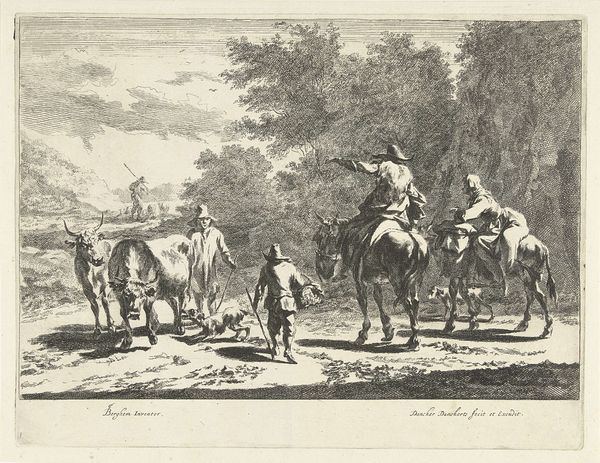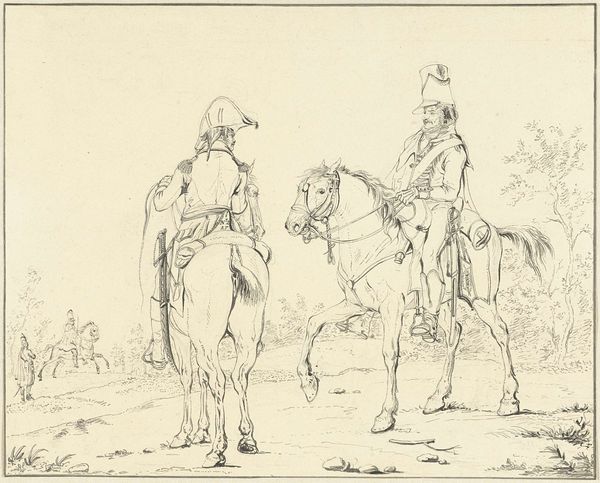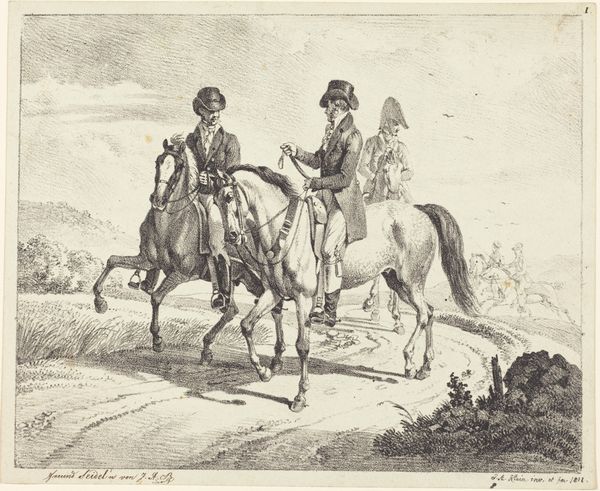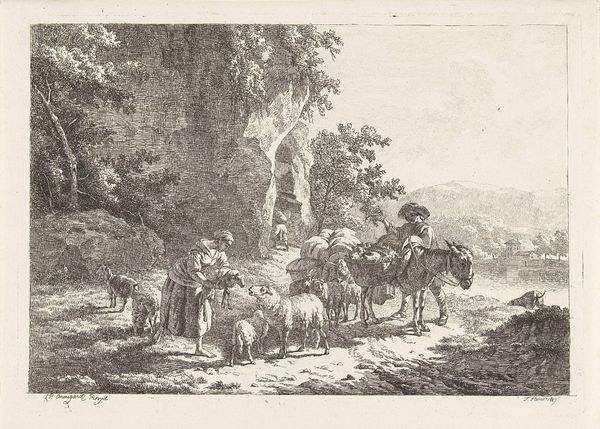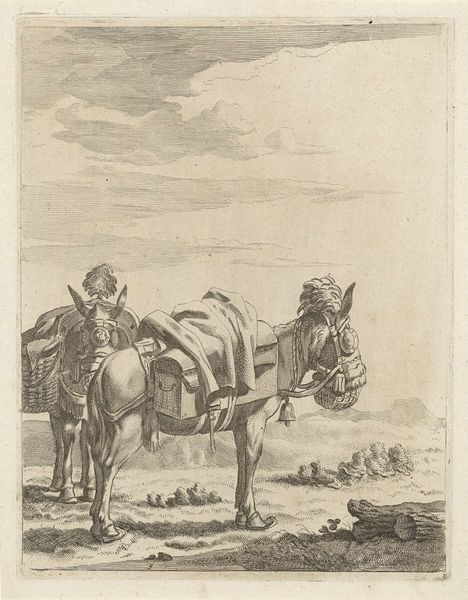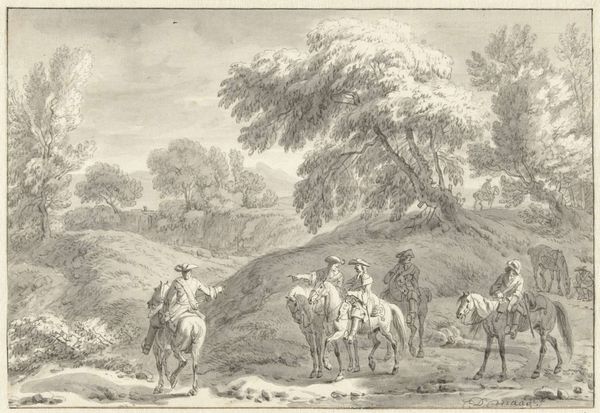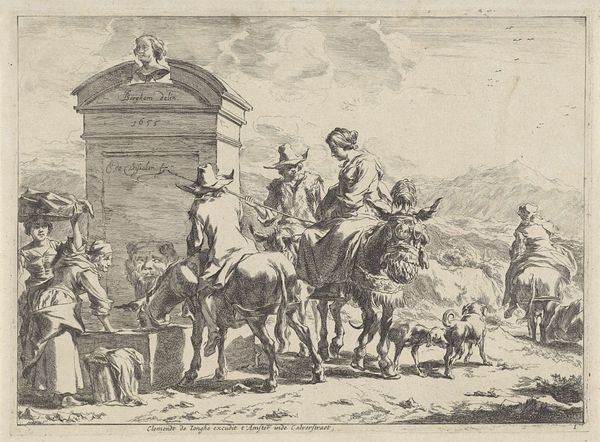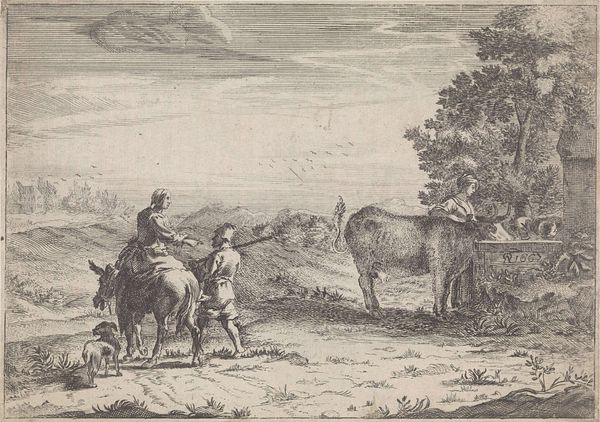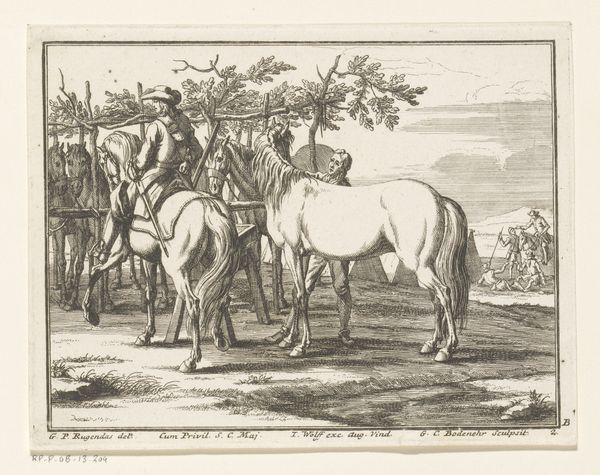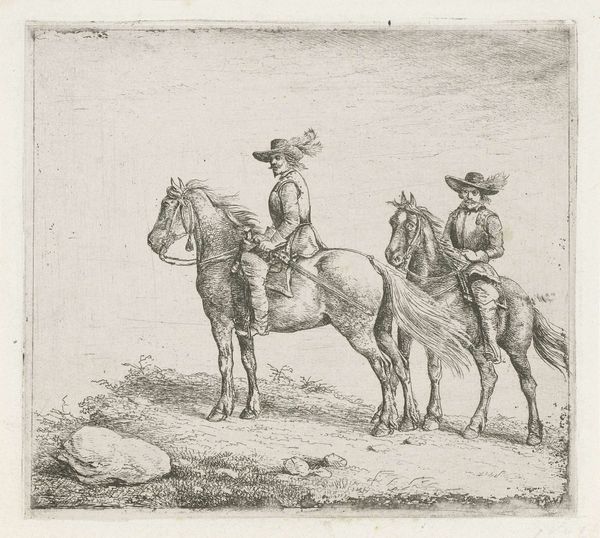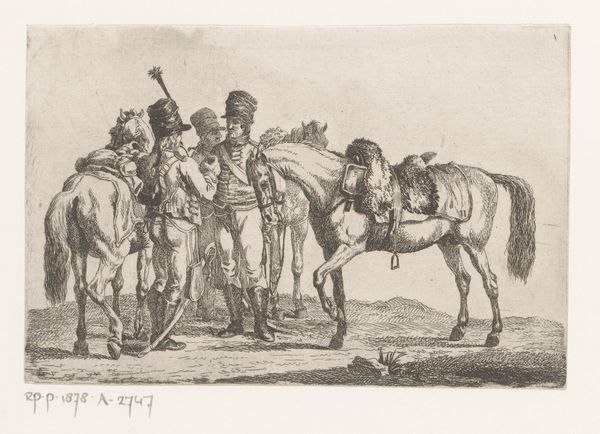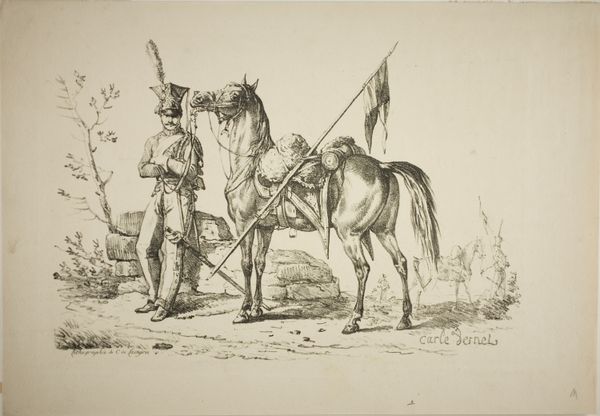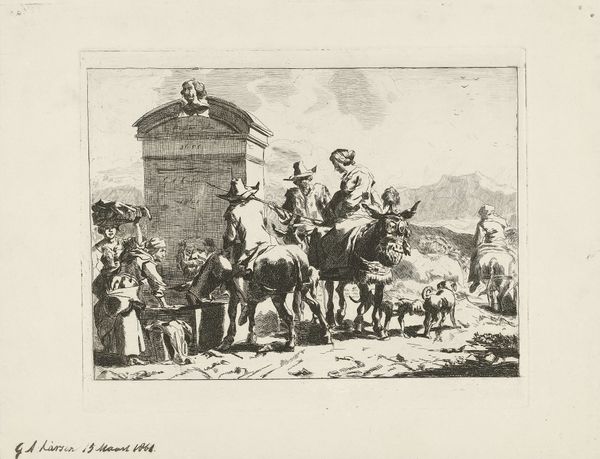
drawing, etching, pencil, pen
#
drawing
#
amateur sketch
#
light pencil work
#
quirky sketch
#
pen sketch
#
etching
#
pencil sketch
#
incomplete sketchy
#
landscape
#
personal sketchbook
#
pen-ink sketch
#
pencil
#
sketchbook drawing
#
pen
#
genre-painting
#
history-painting
#
sketchbook art
#
realism
Dimensions: height 147 mm, width 181 mm
Copyright: Rijks Museum: Open Domain
Curator: This etching, titled "Three Soldiers Pausing at a Dwelling," likely dates from between 1811 and 1867 and is credited to Christiaan Wilhelmus Moorrees. Editor: There's an informal, almost intimate quality to it, don’t you think? The lines are so delicate, it looks like it was pulled straight from a personal sketchbook. The stark blacks and whites make the scene feel like a fleeting memory. Curator: It does possess a certain immediacy. The work resonates with the tradition of genre painting which rose to popularity with the Dutch Masters. We must consider how Moorrees might have positioned himself within that historical trajectory, negotiating themes of everyday life within a rapidly changing society. Editor: I’m particularly drawn to the materiality here – the scratching and hatching of the etching process create this beautiful texture. It speaks volumes about the labor and technique involved. It makes me think about printmaking as a social practice – who would have had access to this image? How would they have interacted with it? Curator: Exactly. Printmaking held a significant public function, facilitating broader dissemination of imagery. Moorrees would have been keenly aware of that reach. It allows us to question his intent: was it documentary, commemorative, perhaps even propagandistic given the soldiers depicted? Editor: Perhaps he’s capturing a particular class dynamic here? The contrast between the uniformed soldiers and the plainly dressed woman at the door is striking. Look, also, at how livestock like the chickens and pig seem intertwined in daily life and the life of this image. Curator: It’s certainly a poignant depiction, regardless. Moorrees invites us to contemplate the socio-political circumstances influencing the narrative—the common, perhaps mundane, interactions between military figures and civilians. Editor: Thinking about the etching process allows me to envision the labor intensive act of creation; a real body pushing the tools, resisting and complying to bring forth an image tied intimately to lived experience. I keep thinking about the human act that is central to this art making practice. Curator: And for me, it brings up complex questions of national identity, military power, and artistic agency during a tumultuous period in history. Editor: Indeed, it all comes together and speaks volumes through material. Curator: Precisely, volumes shaped by culture and by its public life.
Comments
No comments
Be the first to comment and join the conversation on the ultimate creative platform.
